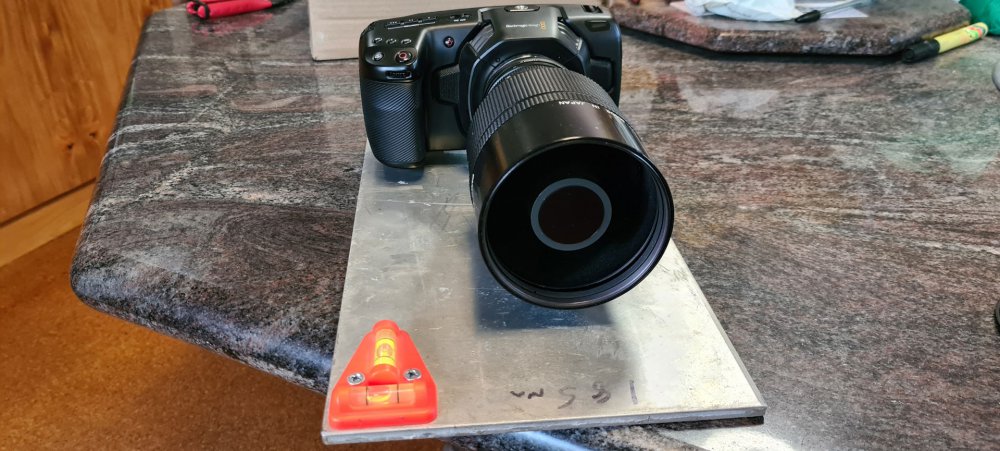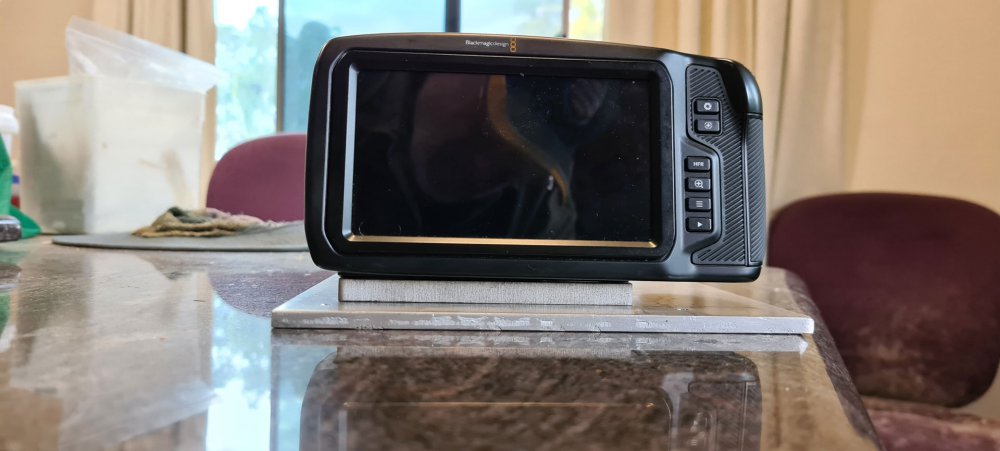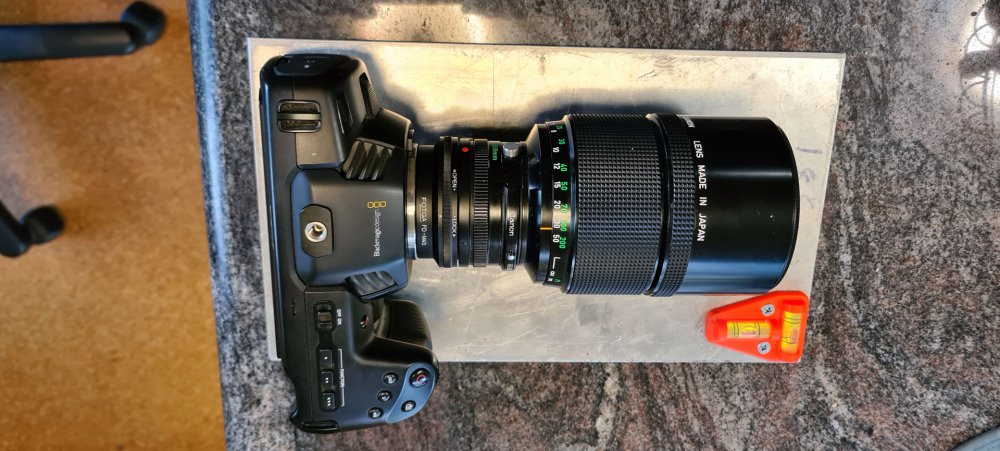Leaderboard
Popular Content
Showing content with the highest reputation on 12/19/2020 in all areas
-
Q: When will digital catch up to film? A: When you learn to colour grade properly. With a few notable exceptions (you know who you are), the colour grading skill level of the average film-maker talking about this topic online is terrible. Worse still, is that people don't even know enough to know that they don't know how little they actually know. I have been studying colour grading for years at this point, and I will be the first to admit that I know so little about colour grading that I have barely scratched the surface. Here's another question - Do you want your footage to look like a Super-8 home video from the 60s? I suspect not. That's not what people are actually looking for. Most people who want digital to look like film actually don't. Sure, there are a few people on a few projects where they want to shoot digital and have the results look like it was shot on film in order to emulate old footage, but mostly the question is a proxy for wanting nice images. Mostly they want to get results like Hollywood does. Hollywood gets its high production value from spending money on production design. Production design is about location choice, set design, costume / hair / makeup, lighting design, blocking, haze, camera movement, and other things like that. If you point a film camera at a crappy looking scene then you will get a crappy looking scene. There's a reason that student films are mostly so cringe and so cheap-looking. They spent no money on production design because they had no money. Do you think that big budget films would spend so much money if it didn't contribute to the final images? I suggest this: Think about how much money you'd be willing to spend on a camera that created gorgeous images for you, and how much you'd spend on re-buying all your lenses, cages, monitors, and all the kit you would need to buy Think about how much time you would be willing to invest on doing all the research to work out what camera that was, how much time you would spend selling your existing equipment, how much time you would spend working out what to buy for the new setup, how much time you would spend learning how to use it, how much time you would spend learning to process the footage Take that money and spend half of it on training courses and take the other half and put it into shooting some test projects that you can learn from, so you can level-up your abilities Take that time you would have spent and do those courses and film those projects People love camera tests, but it's mostly a waste of time. Stop thinking about camera tests and start thinking about production value tests. Take a room in your house, get one or two actors, hire them if you have to (you have a budget for this remember) and get them to do a simple scene, perhaps only 3-6 lines of dialog per actor. It should be super-short because you're going to dissect it dozens of times, maybe hundreds. Now experiment with lighting design and haze. Play with set design and set dressing. Do blocking and camera movement tests. Do focal length tests (not lens tests). Now do costume design, hair and makeup tests. Take this progression into post and line them up and compare. See which elements of the above added the most production value. But you're not done yet - you've created a great looking scene but it is probably still dull. Now you have to play with the relationship between things like focal length / blocking / camera movement and the dramatic content of the scene. Most people know that we go closer to show important details, and when the drama is highest, but what about in those moments between those peaks? Film the whole scene from every angle, every angle you can even think of, essentially getting 100% coverage. Now your journey into editing begins. Start with continuity editing (if you don't know what that is then start by looking it up). You now have the ability to work with shot selection and you should be using it to emphasise the dramatic content of the scene. Create at least a dozen edits, trying to make each one as different as possible. You can play with shot length, everything from the whole scene as one wide shot to a cut every 1s. You can cut between close-ups for the whole scene, or go between wides and close-ups. Go from wide to mid to close and go straight from wide to close without the mid shots in between. What did you learn about the feel of these choices? What about choosing between the person talking and the person listening? What does an edit look like where you only see the person talking, or just the person looking? Which lines land better when you see the reaction-shot? Play with L and J cuts. Now we play with time. You have every angle, so you can add reverse-angles to extend moments (like reality TV does), you can do L and J cuts and play with cutting to the reaction shot from some other line. What about changing the sequence of the dialogue? Can you tell a different story with your existing footage? How many stories can you tell? Try and make a film with the least dialogue possible - how much of the dialogue can you remove? What about no dialogue at all - can you tell a story with just reaction shots? Can you make a silent film that still tells a story - showing people talking but without being able to hear them? Play with dialogue screens like the old silent films - now you can have the actors "say" whatever you like - what stories can you tell with your footage? Then sound design.... Then coaching of actors.... Now you've learned how to shoot a scene. What about combining two scenes? Think of how many combinations are now available - you can now combine scenes together where there are different locations, actors, times of day, seasons, scenarios, etc. Now three scenes. Now acts and story structure.... Great, now you're a good film-maker. You haven't gotten paid yet, so career development, navigating the industry, business decisions and commercial acumen. Do you know what films are saleable and which aren't? Have you worked out why Michael Bay is successful despite most film-makers being very critical of him and his film-making approach and style? There's a saying about continuity - "people only notice continuity errors if you film is crap". Does it matter? Sure, but it's not the main critical success factor. Camera choice is the same.4 points
-
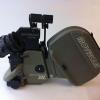
What will it take for digital camera manufacturers to catch up with the film look?
BenEricson and one other reacted to odie for a topic
Two different mediums not a question of catching up the difference between working with Kodak film and digital video is substantial when you a pursuing a career Thats why I have a film camera in my gear bag2 points -
Shooting S16 is a pain in the ass 😅 I am so spoiled I'd rather just use my S1 with the internal stabilization as gimbals and tripods are too tedious to have to carry and I don't want to have to rig anything up besides putting in a battery and SD card LOL That was my conclusion after filming a short on a C300 rigged up. My take away was I think I could have been quicker and actually got a better image off the S1 without any rigging.2 points
-
What will it take for digital camera manufacturers to catch up with the film look?
Mark Romero 2 and one other reacted to HockeyFan12 for a topic
Arri had a film matrix (page 9 I think) that allowed for colorists to intercut between film and Alexa footage more easily: https://www.samys.com/images/pdf/ALEXA-Color-Processing-White-Paper.pdf But they discontinued it. I've heard it's difficult to work with, but I think over time the digital look has become more standard anyway. The F35, C300, and Alexa all felt like different imitations of film to me, whereas today everything feels more like Alexa or an imitation of Alexa. Which makes sense. You imitate the contemporaneous standard format. There are technical difficulties from a sensor design perspective, but I don't really understand them. Full well capacity is a physical limitation (think of each photo site as a bucket collecting drops of light) that dictates highlight dynamic range (once the bucket fills, the highlight clip). Bigger pixels mean a greater full well capacity, but so do improved sensor designs. It's no coincidence that the Alexa has the lowest resolution and the most highlight detail. With film it's sort of the opposite: Kodak added smaller grains of film to get two stops more highlight detail in with 5219 500T film stock than with the prior generation. But if you like the look of S16... why not shoot S16? It is definitely the cool thing to do now.2 points -
Nanlite FS300 watt LED (bowens mount) 349$
andrgl reacted to Cameramoto for a topic
When the Forza 300 came to market one or two years ago I was quite impressed by the reviews for color accuracy. For a daylight fixture to be at that time in the range of 999$, it seemed like a good price, but it was still a little much for my budget. Still, I wondered, because the LED market evolves so fast, where we would end up in a couple of years on the LED offerings. With the FS series from Nanlite, now you get a stronger beam and without a huge ballast to mess you up in your setup. I guess Nanlite is really onto something that will be quite attractive for small crews. You essentially get a 300watt LED daylight for 1/3 of the price of usual Aputure, etc brands. God, I can't wait for the other front runners to bid and offer models in the same range. LEDs are going to get CHEAP! nanliteus.com/collections/fs-series1 point -
Smuggle in your own popcorn, and put your mobile phone on silent, but don't accept the defeat of cinema! RISE UP!1 point
-

What will it take for digital camera manufacturers to catch up with the film look?
BenEricson reacted to MrSMW for a topic
Not possible in Covid-2020 and even after, they will all be shut forever soon anyway because of mobile phones + international popcorn prices that have got waaaaaaay out of hand. Facts.1 point -
In regard to the focus options, basically the same as any other equivalent camera. In regard to anything relatively static, it was is fine. More than fine...as long as it’s set up as best it can be, ie, speed and sensitivity tweaked or at least 0 and 0. Tracking, in non-tracking modes. Well as demonstrated by my test, it can be quite decent if optimised but it was only one test (albeit 2+ continuous minutes) and how it would work in 24/25 fps or log is another matter. Plus which lens. On a gimbal... I’ve seen plenty of decent gimbal stuff, but it is usually limited to a couple of seconds of slow mo so even shorter capture. The other thing about gimbal is if you keep the same distance to subject it should keep focus. It’s just tracking where it’s weak and only tracking. With the S5 there is only one way you are going to know if it will work for you and that is try one, test it and then take it on a real job and the latter is the only real test.1 point
-
What will it take for digital camera manufacturers to catch up with the film look?
IronFilm reacted to KnightsFan for a topic
The Alexa SXT Studio had a rotating mirror shutter, just like a film camera. Technologically, this could be a feature on any digital camera, if there was demand for it. Rolling shutter isn't a sign that digital isn't caught up, per se, it's a sign that in most cases the benefit of film-like shutter artifacts are not worth the added cost.1 point -
Tokina 28-70mm 2.6-2.8 Faulty Infinity Focus?
andrgl reacted to Papiskokuji for a topic
I had many Tokina APS-C 11-16mm, they all had infinity focus issues. Canon lenses for instance go past infinity focus, there's a margin of error, meaning you're sure to hit infinity focus. The Tokinas, they're right on the infinite or just before... They also have lots of chromatic aberrations which I can still see on your picture. Those problems with their lenses are a shame as I otherwise like their products.1 point -
@JordanWright No, don´t finish this thread. Always beautiful to see that Tokina in action. I have it in Nikon mount and it still waits to be used much more. Such a gem!1 point
-
What he's saying, is that they've already caught up (and surpassed it).1 point
-
I am not sure I understand what you are talking about. The A7s3 uses noise reduction at all ISO's and regardless of the lighting situation. Look at the comparisons between the native footage and prores RAW, even in daylight situations you'll see a difference in the noise. Of course for people who don't want much post workflow and want a super clean looking image this could be a good thing. But noise reduction is not something you'll see on a RED or Arri. There is also no reason why Sony shouldn't give us the option to turn it off as you have on their FX6 with the same sensor.1 point
-
The S1 stabilization doesn't require any external processing though as it quite amazing. It is also a much more capable stills camera. But yeah the video specs on the A7s3 are definitely impressive. I just wish they'd give an option to disable the heavy handed noise reduction.1 point
-

Panasonic S5 User Experience
Mark Romero 2 reacted to MrSMW for a topic
Right, well I got so pissed off with both the eye/face detect and the tracking option, I wondered if there was anything else I could do. I tried everything from trying to create a timelapse of motion instead. I could. It was awful. I tried 6k mode and that kind of worked, but when it lost focus, it never regained it. So before finally biting the bullet and moving to Sony for my video (AF) needs, I thought I'd just try all the options that are not supposed to work. Such as 225-area AF. And it pretty much worked. At least good enough for my needs based on this one test. The kit and settings were: S5 + 20-60mm @60mm and f5.6, 4k 50p, 1/100th, variable ND, Natural profile (individual settings such as contrast & sharpness turned down mainly), 225-area, speed -1, sensitivity -1. Unless I happen to have hit upon the best all round settings for this kind of capture...which I doubt, I think there is still room for slight improvement... Really, the only area I have to play with now is the speed & sensitivity settings which I have played with extensively using pretty much every combination of pluses and minuses available, but only in the face/eye and tracking mode. I could test with the 85mm f1.8 and will when I get some more sunshine so I can back or sidelight as on a wedding day I can't control any of that such as if the bride is walking down the aisle at an outdoor ceremony with the sun behind her, that's what I have to work with, so my kit has to pass worst case scenarios. But the latter is not critical, ie, the 85mm f1.8 not working 100% in this kind of scenario would be a bonus rather than a need because as long as I can get a few seconds of it locked on...which I can, in any scene, it's enough. So AF summary based on my experience/testing and needs: A. For stills, it's not in question. It's not the fastest but it's reliable/accurate. That's an easy pass. B. For static video, ie, the subject is people doing things such as; hair, makeup, eating, drinking, talking, wedding ceremony etc, which is 95% of my coverage, it's again, an easy pass ie, this camera does not have a problem with anything like that other than in very rare situations, ie, is pretty much as reliable as anything out there for this kind of thing. C. For tracking AF, based on my above test, it's not 100%, but it's good enough for my needs for those 5-10 sequences on a wedding day (bride entrance, couple exit, confetti walk, couple walking shots, entrance to meal) provided I can replicate (and maybe even improve upon) what I managed in the video. I have been quite desperate to make this thing work, just as I once was moving from the Nikon D3s to Fuji X Pro1 with it's garbage AF. Why? Partly sheer bloody-mindedness, but also because the camera and sytem very much is just right. Top of the list are video quality and stills quality and it's as good as anything and better than most. The size & ergos and build are just perfect with the Smallrig L bracket to just bring the size and weight up a little. The lens options that are beginning to appear and more so in '21 are excellent. I'm still waiting on the complimentary Sigma 45mm f2.8 (I have been battling with Panasonic but it appears I have now won, probably just to make me go away) and that will be my next major test. I'm hoping the Sigma(s) will work for me in the hybrid role. I'm sticking with the Pan 20-60mm for all tracking pieces regardless and it's also my wide-angle stills lens so retains a place in my bag regardless. But I am really interested in the 35mm f2, the 65mm f2 and the 105mm f2.8 macro as these mirrorless designed lenses would complete a perfect line up for me. Various tests have shown however that within L Mount, native works best but we'll see and if the Sigma route doesn't work out, I'd be disappointed but more than happy with Panasonic's own new f1.8 lineup.1 point -
+1 for me it was Kodak #7203..Wow!1 point
-

NX1, baby!
Francesco Tasselli reacted to Andrew Reid for a topic
I have three! One cost 290 euros body only. Bit battered though1 point -
Shot this with the S1 using emotive color LUT.1 point
-
Some time ago noone was asking about long lenses. As it turned out i'd just received a canon fd 500mm mirror lens a few days before. While its its taken some time to find some traction, i finally made some progress with a base for the whole contraption. The chinese fd to mft adapter has a more than tolerable amount of play inbuilt. To remedy that i spent the morning measuring and drilling and more measuring. Surprisingly it all fitted together and adds a nice amount of rigidity, No more play. probably due more to good luck than good management. 😉 i added a bubble level i had lying around as the tripod levels are tiny dam things 🙄 Its a bit oversize yet and i have to add the samsung t5 drive to it yet plus i plan on adding a stepper motor for focusing so its an ongoing project. Its useable now, so looking for interesting subjects to video.1 point
-
GH5 to Alexa Conversion
Sage reacted to HockeyFan12 for a topic
I usually work with Alexa footage that's shot at one of three presets (3200K, 4300K, 5600K). Sage’s LUTs work really well, but getting the best match requires white balancing both the S1 and Alexa to neutral white before converting. Alexa white balance presets are not neutral–they're orange/green. I wanted equivalent white balance presets I could use (5600k, 4300K, 3200K) with the S1, where I could shoot V Log, apply Sage's LUT, and get a ballpark match to Alexa presets–even if it might be a little less precise than doing this the right way. I lit a white card with a Luxli RGBW light at 3200K, 4300K, and 5600K and then shot Alexa footage shot at 3200K, 4300K, and 5600K presets. Then I shot the same with an S1 and and applied Sage’s Log C conversion LUT. I adjusted the white balance settings manually until I got a good match. I've only tried out the 5600K preset so far in the field but it matches pretty well. K1: 5600K A: 6 G: 9 (should be G: 10, but it doesn't go that far) – apply Daylight Log C conversion K2: 4300K A: 6 G: 6 – apply 4200K Log C conversion K3: 3200K: A7: G: 4 – apply Tungsten Log C conversion Beyond that, a bit of extra noise and a bit of unsharp mask after downscaling S1 4k to Alexa 2k/3.2k (amount 24, radius 3) also helps make S1 footage look more like Alexa footage. If this isn’t for you, ignore this post. It's not as precise as doing things the right way but for my needs is much more convenient.1 point -
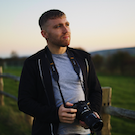
Tokina 28-70mm 2.6-2.8 Faulty Infinity Focus?
andrgl reacted to JordanWright for a topic
SUCCESS! Just to finish this thread, I replaced the eBay purchased Metabones XL with a new one. The new one had much tighter tolerances and even a weather sealed gasket on the back. I had to adjust the infinity focus a small amount but now my XL and Tokina 28-70mm work great together!1 point



